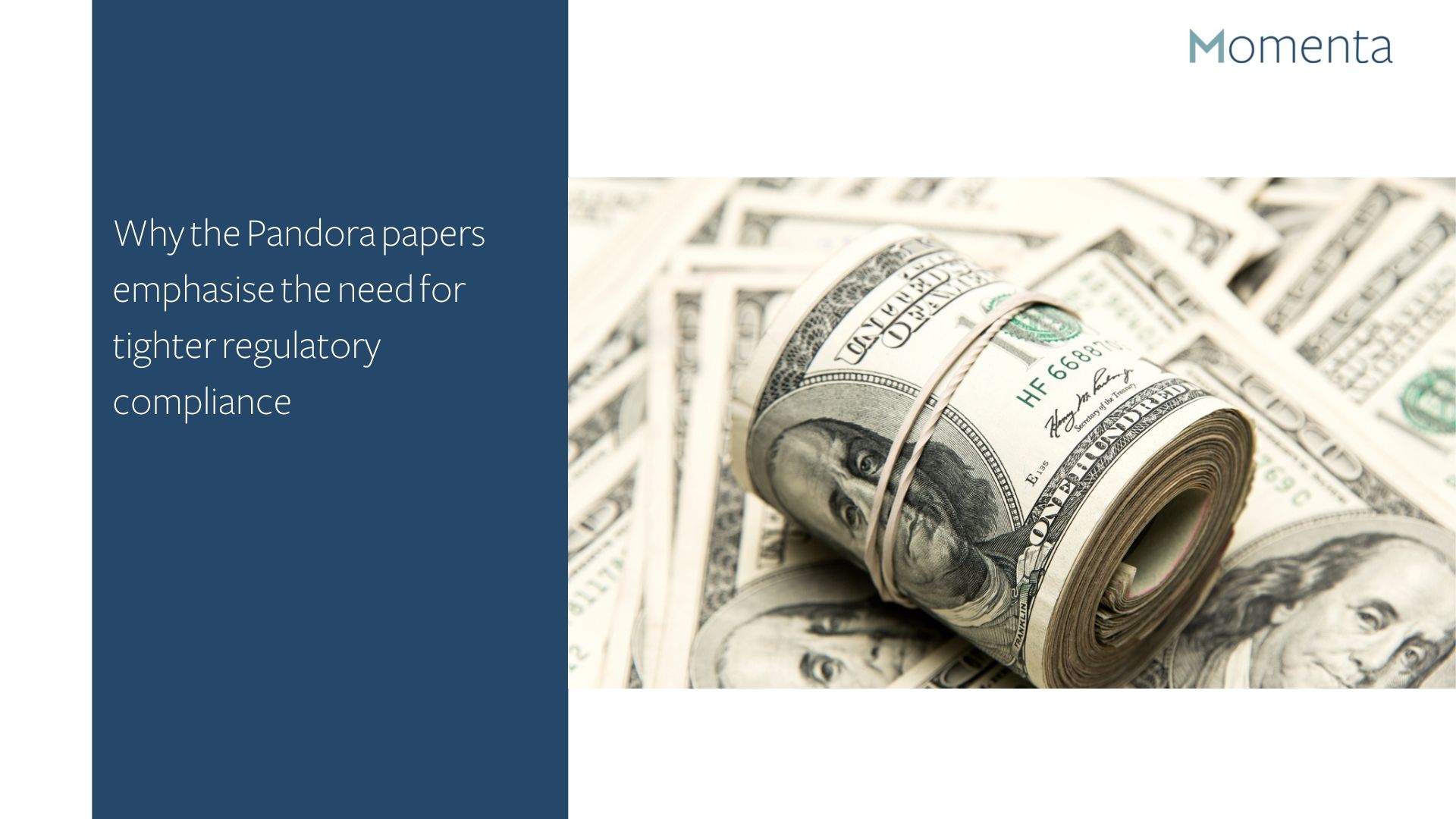Why the Pandora papers emphasise the need for tighter regulatory compliance
The Pandora Papers, which were leaked recently to much fervour from the wider media, revealed that several celebrities, politicians, billionaires, and even known drug dealers, as being amongst the wealthy and powerful who have poured money into a variety of assets, including beachfront properties, palatial mansions, and luxurious boats, across multiple global jurisdictions.
The leak of this information, which contains approximately 12 million files in total, paints a vivid picture of the many networks and techniques employed by shell firms to avoid further examination, evoking flashbacks of the Panama Papers.
However, in-spite of what is at the very least an embarrassing and revealing leak, the question of whether this will result in actual new regulatory systems and internal practises is still being debated.
The offshore risk
The papers, amongst other things, revealed 35 international leaders’ covert offshore dealings, including current and former presidents, prime ministers, and heads of state. They also shed a light on the hidden finances of over 300 additional public figures in over 90 nations, including government ministers, judges, mayors, and military generals.
They provided a rare glimpse into the inner workings and operations of a global offshore economy that allows some of the world’s wealthiest people to hide their money and pay little or no tax. This has created increased scrutiny on the use of offshore entities, especially given the fact that tax evaders, fraudsters, and money launderers have been uncovered across numerous leaks, and law firms that engage in setting up these vehicles now need to be prepared for the fallout from these leaks.
People can, of course, lawfully avoid paying some taxes by relocating their money or forming corporations in tax havens, although this is equally widely regarded as, at best, unethical.
There are also a variety of valid reasons why people would want to keep their money and assets in various countries, such as to protect themselves from criminal attacks or to avoid governmental or dictatorial regimes that are unstable.
Although it is not unlawful to have ‘secret’ offshore assets, creating a complicated network of corporations in order to shift money and assets is also the approach of choice for international criminals to conceal their proceeds. A fact which, invariably, leads to unflattering assumptions that all individuals involved in such practices have something to hide.
Following prior breaches such as the Panama Papers, there have been recurrent calls for politicians to make it more difficult for the super-wealthy to avoid paying taxes or hiding assets via international means.
More transparent data in your compliance teams has never been more required
The Pandora Papers have left an awful lot to unpack for compliance teams at the forefront of the fight against international financial crime.
Understanding the forms of exposure documented in the papers is a critical first step, as is revisiting any customers whose risk level may need to be reviewed because of these revelations, and what they tell us about the tactics employed by financial criminals.
When it comes to assessing financial crime risks, adverse media screening can assist investigators to uncover links, especially now that so many leaked files are in the public domain.
Given the rising frequency of investigative exposés, businesses should set aside resources and/or prepare a contingency plan in case they need to respond fast to new stories and deal with any regulatory or law enforcement investigations that result.
Client lists should be checked as well. Where appropriate, compliance teams should enquire about trusts, shell businesses, corporate service providers, and recognised jurisdictions that are frequently cited in these leaks.
How can a contingent workforce help you become more compliant?
Often, the main contributing factor which puts many compliance teams at a disadvantage in the battle to prevent and unearth bad practices is the simple fact that they are understaffed. As a result, they simply do not have the internal capacity to ensure that any weaknesses are clearly and fully acknowledged and addressed.
Contingent teams can ensure a ‘no stone is left unturned approach’, and in a highly pressured regulatory environment, hiring contingent resource can make a vital difference in understanding the weaknesses of your risk assessments, as well as setting up concrete plans to resolve them.
Utilising the expertise of contingent resourcing can offer many firms breathing space in terms of resolving any issues their AML controls may have. Setting up the right teams to ensure any gaps are identified will be key for firms this year as regulators place more pressure on financial service participants to strengthen current compliance systems and controls.

